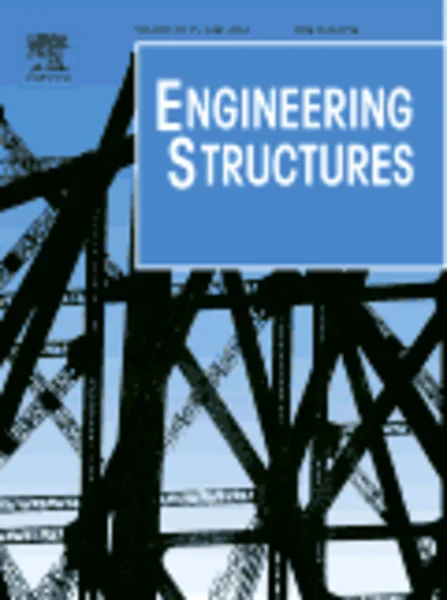-
a compression–tension concrete damage model, applied to a wind turbine reinforced concrete tower
جزئیات بیشتر مقاله- تاریخ ارائه: 1392/07/24
- تاریخ انتشار در تی پی بین: 1392/07/24
- تعداد بازدید: 819
- تعداد پرسش و پاسخ ها: 0
- شماره تماس دبیرخانه رویداد: -
structures subjected to cyclic loads show alternative tension–compression stress states; in such a case, even if certain damage (fracture) is reached during the tension cycle, the computational model of the structure should maintain its capacity to withstand subsequent compression based only on the contact effect in the damaged area (opening, closing and reopening of cracks). in order to control this behavior, a phenomenological constitutive model able to consider the contact as a structural limitation is required. from the constitutive point of view, geomaterials have different damage thresholds for tension and compression and, from the structural point of view, it must be ensured that the material damaged in tension still resist compression. in this case, it is accepted that cracks behave as a contact surface at the structural level. to meet the above mentioned phenomenology, a modification of the damage model differentiated in tension and compression proposed by faria et al. [faria r, oliver j, cervera m. a strain-based plastic viscous-damage model for massive concrete structures. int j solids struct 1998; 35:1533–58] is performed in this paper, considering independent strength thresholds in each of these processes, controlled with two independent discontinuity threshold functions. also, in this work an elasto-plastic constitutive model is used to represent the behaviour of the steel bars.
مقالات جدیدترین رویدادها
-
استفاده از تحلیل اهمیت-عملکرد در ارائه الگوی مدیریت خلاقیت سازمانی و ارائه راهکار جهت بهبود
-
بررسی تاثیر ارزش وجوه نقد مازاد بر ساختار سرمایه شرکت های پذیرفته شده در بورس اوراق بهادار تهران
-
بررسی تأثیر سطح افشای ریسک بر قرارداد بدهی شرکت های پذیرفته شده در بورس اوراق بهادار تهران
-
بررسی تأثیر رتبه بندی اعتباری مبتنی بر مدل امتیاز بازار نوظهور بر نقد شوندگی سهام با تأکید بر خصوصی سازی شرکت ها
-
تأثیر آمیخته بازاریابی پوشاک ایرانی بر تصویر ذهنی مشتری پوشاک ایرانی (هاکوپیان)
-
روانشناسی رنگ در بیمارستان ها
-
اثر تزریق داخل بطن مغزی سیلی مارین بر مصرف تجمعی خوراک در جوجه های گوشتی محروم ازغذا در دوره پایانی
-
آنژین قلبی و گرفتاری شدید آئورت در هیپرکلسترولمی فامیلیال هموزیگوت – گزارش یک مورد نادر- پسربچه 10 ساله
-
high yield production of d-xylonic acid from d-xylose using engineered escherichia coli
-
performance of friction damper for dynamic response reduction of seismically excited knee braced steel frames
مقالات جدیدترین ژورنال ها
-
مدیریت و بررسی افسردگی دانش آموزان دختر مقطع متوسطه دوم در دروان کرونا در شهرستان دزفول
-
مدیریت و بررسی خرد سیاسی در اندیشه ی فردوسی در ادب ایران
-
واکاوی و مدیریت توصیفی قلمدان(جاکلیدی)ضریح در موزه آستان قدس رضوی
-
بررسی تاثیر خلاقیت، دانش و انگیزه کارکنان بر پیشنهادات نوآورانه کارکنان ( مورد مطالعه: هتل های 3 و 4 ستاره استان کرمان)
-
بررسی تاثیر کیفیت سیستم های اطلاعاتی بر تصمیم گیری موفق در شرکتهای تولیدی استان اصفهان (مورد مطالعه: مدیران شرکتهای تولیدی استان اصفهان)
-
مقدمه ای بر تحلیل هرمنوتیک و مفهوم آن در معماری
-
بررسی رابطه بین مهارت های ارتباطی و کیفیت زندگی دبیران
-
تحلیلی بر بزهکاری اطفال و نوجوانان در پرتو نظریه معاشرت ترجیحی و تعامل نمادین
-
problem of irony and intertextuality
-
a review on form a visual test of torrance creativity test in iran




سوال خود را در مورد این مقاله مطرح نمایید :